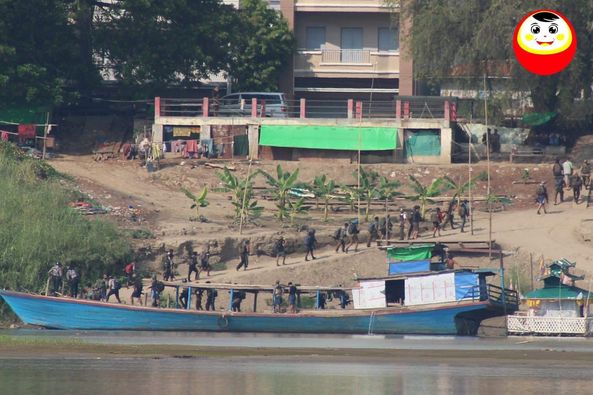Myitkyina, 20 September
Junta army, which has aggressively launched counterattacks on the People’s Defense Forces from the ground and air for more than two and a half years, has now relied on using wateway, resistance fighters told Than Lwin Times.
Military regime has deployed forces across the country due to the attacks of hundreds of armed forces formed to overthrow the military dictatorship. Therefore, the military council is now using the navy in addition to the army and air force.
The junta navy has been using waterways for battles in Kachin State, Magway, Sagaing, and Tanintharyi Regions, as well as regions and states close to rivers, and has been carrying weapons and sending reinforcements through that route.
According to military observers, resistance strongholds in Kachin State and Sagaing Region have seen the most attacks using waterways. The military ships carrying weapons and troops are routinely attacked in the Ayeyarwaddy River, and regime troops fight back with heavy weapons.
A source from Kachin State said, “The shells fired by junta ships damaged local homes and killed people. On Bamaw route, the KIA and the Student Revolutionary Force are targeting junta forces, so military regime has been using the Ayeyarwaddy River as a supply route between Bamaw and Mandalay.

On 1 September, the military camp in Kyaukgyi village on the bank of the Ayeyarwaddy River, which was providing security for junta warships, was seized by the Kachin Independence Army (KIA) and PDF joint forces.
Ko Star from the Tanintharyi local defense force also said that the junta army has been using the water route in Tanintharyi Region to send food, troops, and weapons, as well as for fighting and they mainly uses water routes from Bokepyin-Kawthaung to Myeik, and from Myeik to Palaw, Dawei, and Launglon.
Military observers believe that the military council is relying on the water routes to send troops and supplies due to mounting losses on land and the high cost of air transportation.
According to research groups, the nature of battle has changed in more than two years after the coup due to the resistance of the ethnic armed forces (EAOs) and regional defense forces, and the junta army is shifting from an offensive to a self-defense strategy.
According to the August report of ISP-Myanmar, over 10,000 battles have taken place across the nation during the two-and-a-half years since the coup, and junta army has been assaulting people regardless of the military or civilian targets.
News-Than Lwin Times
Photo-ANPTT

